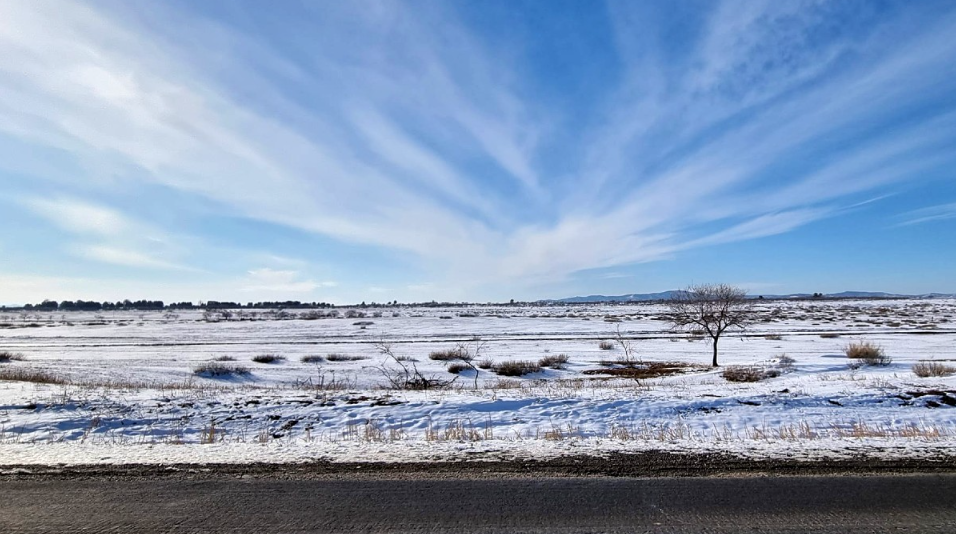Mongolia’s harsh winters and dependence on mining make it particularly vulnerable to economic shocks. Proactive adaptation strategies—including resilient infrastructure, diversified trade, and social protection—are critical for sustaining growth in similarly exposed economies.
As the coldest developing country in Asia and the Pacific, and home to the world’s coldest capital city, Mongolia’s economy faces not only the challenges of extreme weather but also heavy reliance on its resources.
Mining accounts for almost a quarter of gross domestic product and is a major source of export earnings and government revenue. The country’s rural economy is at the mercy of harsh winter conditions known locally as dzuds, which devastate livestock and disrupt rural livelihoods.
One influential study published in Nature a decade ago revealed a non-linear relationship between temperature and economic productivity. It found that economic productivity per capita tends to be highest when a country’s average annual temperature is around 13°C.
In colder countries, productivity improves as temperatures rise toward this optimal level. But once temperatures exceed 13°C, economic output begins to decline—initially gradually, and then more sharply as heat intensifies.
This pattern holds true across both rich and poor countries, and in both agricultural and non-agricultural sectors. But Mongolia is an exception among developing economies. Its average annual temperature is much colder than the level typically associated with peak productivity of 13°C—meaning that a bit of warming could help its economy perform better.
Unlike most other developing economies, which struggle with excessive heat, Mongolia must contend instead with long, frigid winters that limit agricultural and industrial productivity.
Mongolia’s long winters restrict productivity in key sectors such as construction and transportation, while weather shocks make traditional livelihoods increasingly fragile. Harsh winters are becoming more frequent and severe.
The winter of 2023–2024 caused the loss of over 7 million livestock, more than 10% of the national herd, and contributed to agriculture’s share of GDP falling from 13.2% in 2021 to just 9.7% in 2023 as well as a further contraction in early 2024. The resulting decline in consumption, economic activity, and food security, especially among rural communities, emphasizes the urgent need for adaptation strategies.
However, a new study shows that Mongolia is not necessarily immune to the economic consequences of rising temperatures.
While some warming may temporarily improve pasture conditions or extend growing seasons or construction periods, there will be worsening economic consequences as the extreme weather intensifies.
A more moderate temperature will initially benefit agriculture, services, and mining sectors through better crop yields, easier extraction conditions, and reduced heating expenses. But these short-term benefits fade quickly, resulting in declining productivity, especially in livestock and services, as heat stress, resource depletion, and rising cooling costs escalate.
Similarly, increased rainfall brings immediate disruptions, particularly affecting construction, even as it boosts agricultural productivity by improving pastures for grazing.
Integrating greater resilience into national development plans can reduce vulnerability to shocks, ensuring sustainable growth even in the face of increasing uncertainty. Mongolia’s government has begun exploring innovative approaches, such as index-based livestock insurance and renewable energy investments, to hedge against weather uncertainties and to reduce reliance on carbon-intensive industries.
Many other countries across Asia and the Pacific, including Kazakhstan, the Kyrgyz Republic, and Viet Nam, also rely on agriculture, pastoralism, and natural resource extraction—sectors deeply affected by extreme weather. Additionally, small island economies grapple with risks such as rising sea levels and cyclones, making their economic resilience similarly precarious.
For these economies, Mongolia’s experience highlights the importance of proactive adaptation strategies like these:
Prioritize investment in resilient infrastructure to protect against increasingly frequent weather disruptions and maintain economic stability—especially in regions where critical sectors like transport, energy, and agriculture are highly exposed.
Broaden the economic base beyond weather-sensitive sectors, such as agriculture, livestock, and extractives. Mongolia’s experience shows that reliance on a narrow set of industries renders economies highly vulnerable to both environmental and market shocks.
Design adaptation policies tailored to local vulnerabilities. Effective response requires understanding the specific risks faced by different regions and communities—particularly those most exposed, such as rural and pastoral areas.
Strengthen financial buffers and risk management to absorb weather-related and economic shocks. Instruments like index-based insurance and contingency funds can reduce recovery costs and help households and businesses bounce back faster.
Build more diverse and resilient trade partnerships. Relying heavily on a single export market amplifies exposure to external volatility. Mongolia’s case illustrates the importance of securing broader market access to stabilize export revenues.
Expand social protection programs to support households facing income shocks. In rural economies dependent on agriculture or herding, timely and targeted safety nets can reduce long-term damage from short-term losses.
For developing economies across Asia and the Pacific, Mongolia’s cold reality emphasizes a clear policy imperative: diversify beyond weather-sensitive sectors, tailor adaptation strategies to local conditions, and balance immediate responses with long-term strategies for sustainable economic growth.
Source: blogs.adb.org



